Bakonzo People and Their Unique Culture in Uganda
Who are the Bakonzo People in Uganda? The Konjo (pl. Bakonjo, sing. Mukonjo), or Konzo, are a people located in the Rwenzori Mountains of southwest Uganda. Numbering 361,709 in the 1992 census, they live on the plains, hills and mountain slopes up to an altitude 2,200 meters.
Traditionally agriculturalists and animal husbanders, they farm yams, beans, sweet potatoes, peanuts,soy beans, potatoes, rice, wheat, cassava, coffee, bananas, and cotton, while keeping goats, sheep, and poultry.
The Konjo practice traditional religions and Christianity. Konjo speakers also live on the western slopes of the Rwenzori range in the Democratic Republic of the Congo.
The language spoken by the Konjo is called, variously, Rukonjo, Olukonjo, Olukonzo, or Lhukonzo. It has a 77% lexical similarity with Nande. There are many dialects, including Sanza (Ekisanza).The Konjo were part of the armed Rwenzururu movement against the Toro Kingdom and central government that reached heights in the mid-1960s and early 1980s.
In 2008, the government recognized the Rwenzururu Kingdom, formed by the Konjo and Amba peoples, as Uganda's first kingdom shared by two tribes.
Governance among the bakunzo people
The Bakonzo and Baamba maintained forms of government based on councils of elders. But with the advent of colonialism, the Bakonzo and Bamba were placed under their neighbors, the Batooro, who had a centralized kingdom. According to a book TRIBE:
The Hidden history of the Mountains of the Moon by Tom Stacey, the Bakonzo started a resistance movement, the Rwenzururu, which, while political to win back their independence, has come to be the strong cultural allying point for the Bakonzo.
But despite the cultural headship uncertainty, the Bakonzo have some of the most elaborate cultural practices as I found out when I interviewed some Bakonzo and reviewed some literature on the Bakonzo.
Circumcision among the bakonzo
You are not a man among the Bakonzo if you are not circumcised. The Bakonzo like the Bagisu, have circumcision as one of their most entrenched cultural practices. But unlike the Bagisu who hold an annual circumcision ceremony (Imbalu), the Bakozo's circumcision is done without pomp and celebration.
Isa Baluku, a Mukonzo who grew up in Kasese and only came to Kampala when it was time for his university education says that the Bakonzo will not force anyone to be circumcised like the Bagisu during Imbalu season. For the Bakonzo, circumcision is a way of life. "You are brought up knowing that you have to be circumcised just like you know that you will one day get married," Baluku says.
Baluku says he never knew that a man could grow up uncircumcised. "For me that side of life did not exist. Every Mukonzo male wants to be circumcised because it is for his own good anyway!" he exclaims. Another Mukonzo, who would not let his name be mentioned, told me that he got the shock of his life as an adult when he saw an old uncircumcised man. "I was in shock. I kept on wondering how he had grown to his old age without being circumcised," he said in an interview.
The culture of circumcision is deeply rooted in the Bakonjo's way of life and although they don't mobilize people for circumcision like the Bagisu do, almost every Mukonzo male is circumcised. Many Bakonzo have grown up knowing only too well that society will not let a man grow up comfortably in their midst while uncircumcised.
Asuman Bisika recalls with laughter how one of his nephews went to be circumcised without telling anyone at home. "It was due to peer pressure. He could not mix well with his peers, say at the river when they went to graze goats, without being laughed at."
When circumcision was still a ritual practice, all the Bakonzo were required to go to Bundibugyo to be circumcised until 1964 when the last ritual circumcision was held. Bamba tribesmen did the circumcision. Bisika says that it was taboo for a Mukonzo to be circumcised by a fellow Mukonzo.
Today however, anyone with the expertise can circumcise, be it at the hospital or one of your parents since the age at which circumcision is done does not even matter. Bisika however explains that there are traditional 'circumcisers' who move from area to area circumcising among the Bakonzo that need to be circumcised. "These may not be Bamba tribesmen but must be graduates of the ritual circumcision," he says.
There has not been much public concern or debate on this tradition among the Bakonzo like it is among the Bagisu. In fact while today you find some uncircumcised Bagisu, Baluku insists that this is a tradition that will never die out among the Bakonzo.
"Every Mukonzo wants it because they know it is what is good for them," he emphasizes. Other than it being ritual and the most significant way to identify with manhood, no Mukonzo woman will come near an uncircumcised man. This means that the chances of an uncircumcised Mukonzo man to get married to a Mukonzo are almost nil.
Marriage among the bakonjo
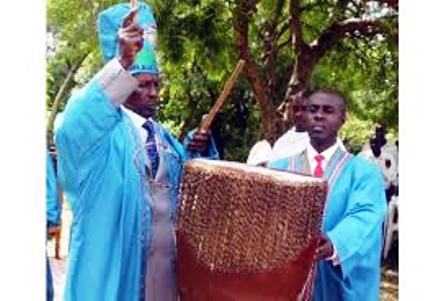 Marriage among the bakonjo
Marriage among the bakonjoBefore the influence of education and modernization on most African traditions, when a woman gave birth to a girl child among the Bakonzo, the fathers with sons came with gifts for the parents. The parents of the girl child paid special attention to the gifts being brought. Reason: It is from these gifts that the parents decided which family would take their daughter for marriage.
In other words, the gifts were a symbol of interest in the newborn by the different fathers in a given locality on behalf for their sons. The parents of the girl based on the gifts to choose their future in-laws. The gifts brought to the girl's parents would determine a financially potential family, with a background of a good reputation in the community.
Better still, the girl's parents' choice was made easy where they were friends with another family with a young un booked son. Marriage of these children would be used to strengthen the friendship bond between these two families.
Baluku says that in some cases, the girl's parents only accepted gifts from the chosen family. Everyone else in the community started to consider the girl child a daughter-in-law for the accepted family. He says that at about seven years of age, the girl was taken to stay with her parents-in-laws-to-be and the bride price, Omukagha, was paid in return at a small ceremony attended by a few elders from the boy's family.
This did not mean that the girl was being married off at the age of 7. The couple began to get in contact when the girl was about 12 years old. Around that time, the mother-in-law would take the girl to sleep in her husband-to-be's hut until she conceived. It was believed that by that age, the children are old enough to know that they are meant to be married.
No courtship with partner
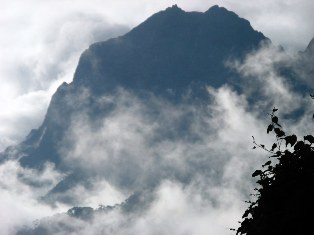
There was no chance for courtship or for the couples to make their own choices for a man's first wife. All the scouting and bargaining was done by the parents of the girl and the boy in the early years. Baluku says that polygamy, which was for those who could afford it, was a chance for men to choose their own spouses.
While a family with a good reputation had a hard task of choosing a suitor for their daughter from among the various contenders, it was hard for the unpopular families to betroth their children. Physical beauty was not an issue of consideration at all. Such daughters provided second wives for the wealthy to choose.
"If a family was reputed for having badly mannered members, no parent gave them their children or even came to book their daughters," explains Baluku. It is daughters from such families that provided second wives for the wealthy to choose.
Today though this peculiar marriage tradition of betrothing has died out, marriage among the Bakonzo is still used to strengthen family friendships.
After birth rituals
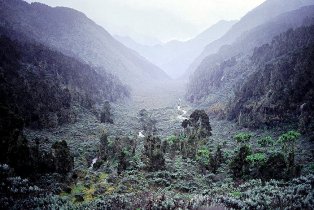 The land of the bakonzo people in uganda
The land of the bakonzo people in ugandaWhen a woman gave birth, she did not sleep on her marital bed until the bleeding stopped. "She was considered unclean for her marital bed," explains Baluku.
Things are more complicated however when she gives birth to twins. The birth ofAbahasa, the twins, meant that their mother, the Nyabahasa would have to sleep with one of her husband's nephews when she announced that she was ready to go back to her husband's bed. The public looked forward to this ceremony, which is referredOlhuhasa.
The Salongo or Isebahasa, would begin to pass on news in his socializing and drinking groups of the upcoming Olhuhasa from the time his wife says she is healed. At the same time, a hut was built in the middle of the man's compound where the event is to occur.
With a big congregation amidst jubilation, the Isebahasa's oldest nephew was taken to the hut to have sexual intercourse with the Nyabahasa.
"Because of fear and the knowledge of a big crowd outside the hut, some nephews would not get an erection for long," explains Baluku. Yet the cultural practice had to be accomplished.
Otherwise, it was believed that the twins would die. If one nephew completely failed, another one was brought to do the ritual and the failure of many nephews became a laughing stock. Finally when the Nyabahasa appeared from the hut with her successful nephew in law, there was jubilation and lots of feasting.
"The Isebahasa does not mind, in fact he is among the jubilating crowd. This is the only way to ensure that his twins are going to live," Baluku explains.
This is as far as the nephew and his aunt went concerning their sexual intimacy. In fact a spouse had a lot of explaining to do if the Bahasa cried a lot. This was believed to mean that one of their parents had committed adultery.
This cultural belief was to signify that the twins' parents could get away with anything. It is for such traditions, that we are grateful to education and modernization. Bisika explains that because the possibility HIV infection, alongside education and modernization, traditions like Olhuhasa have died out. But like all cultures, not every thing dies out at once, especially among the Bakonzo famous for clinging to their cultures and traditions.
Bakonzo Names tell Family Positions
One of the cultural attributes that belong exclusively to the Bakonzo is the way they name their children, almost automatically if you like.
The criterion the Bakonzo follow in naming their children is unique only to them alone in Uganda. Though they have clans, these will not be evidenced in their names like most other tribes. That the child be accorded a name depending on the events surrounding the their birth is also an option rarely chosen, unlike in other Ugandan tribes.
The male Bakonjo you have come across have probably had one of these names:
Baluku/Mumbere, Bwambale, Masereka, Kule, Thembo or Mbusa.
Baluku Issa explains that this is because the Bakonjo are given names depending on their birth positions in the family. He says that the above-mentioned are the standard names for the male children. "The first-born male will automatically be called Baluku or Mumbere, the second born male Bwambule and so forth," says Baluku.
The females on the other hand have the names to choose from:
Masiko/Musoki, Biiro, Kabugho, Mbambu, Ithungu, Kyakimo and Nziabake.
The six and seven names for the males and females respectively form the thirteen standard names for the Bakonzo.
This naming follows the woman's line of birth. "Though I am not my father's first-born, I am called Bakulu. This is because I am my mother's first born," explains Baluku.
This means that while a woman will only have one Baluku, a man can have as many Balukus as the number of his wives.
Being born after a deceased sibling is however an exception also reflected in the names given to these siblings. In this case, a child will be given names like Bisiku, which means fibers or Kiabu that means dumping grounds. These names express the meaningless or hopeless situation that the family finds itself in on loosing a child.
"This is done out of fear that maybe this one will also die," explains Baluku. "The family does not want to place so much hope in the next child so that in case they too die, it appears like it was expected anyway," he adds.
Another Mukonzo, Asuman Bisika confers that such names are also a sign of mourning for the deceased child. "I understand when a foreigner finds these names crude but I understand it as just a sign of mourning," he says in an interview.
If Kiabu or Bisiku lives however, the naming goes back to the standard form but the deceased's name can never be given to another child in that same lineage. If the deceased was meant to be called Kule or Mbambu, a fourth born, then the one after the Bisika will be Thembo or Ithungu, names for the fifth born.
Baluku however explains that the tradition of giving children names like Bisiku is dying out. "People no longer see the significance of giving their children such regretful names so they opt for the situational ones in such circumstances," he says.
The situational names include names such as Bulemu if one bares their child during war, Kyamugagha for one born on a Saturday or even Mubalami if the mother happens to deliver her child on a journey.
The twins also have about four sets of names that do not fall within these thirteen. These include Nyangoma and Nyakato, Isingoma and Kato. "If one is born after the twins irrespective of whether they are female or male, they are called Kitsa, the next one Kamala, the third Kibabala and the naming hereafter goes back to the standard names," explains Bakulu.
Muhindo is the name that marks a change in sex of the newborn from the previous child. If the first-born is Masiko and the second born is a boy, then he will be named Muhindo.
The child that comes after him in this case would be the third born thus a Bwambale if he is a boy or a Biiro if it is a girl.
So what happens when one gives birth to more than seven daughters or six sons? Baluku explains that while the eighth boy child will be named Kitahutehina, meaning 'You do not have a name'; the eighth girl will be called Sendaki to mean 'What did you come for?'
One wonders whether Sendaki is not a harsh name showing the family's anxiety for an extra girl child.
"At least girls have the provision for an extra name before the eighth born who is called Balubasa to mean these are enough, unlike the males whose seventh born is immediately denied a name," Bakulu argues. He explains that the names have nothing to do with which gender is treasured more since the girls even have more names.
When all the standard names and those that come after them have been given out, then the children can be named depending on the circumstances of their birth.
That is when you will find Bakonzo with names like Kyamukagha if one is born on a Saturday or Bulemu for one born during the war. They can also be given one of their ancestor's names as long as they are not being repeated in the nuclear family.
Now you know a little about the Bakonzo. The next time you come across their names you will be more appreciative of their culture and notice much more than just their height and round faces.
Other Tribes in the Region
Kenya Art | Kenya Festivals | Kenya Gender Issues | Kenya Gestures | Kenya Greetings | Kenya History | Kenya Language | Kenya Literature | Kenya Modern Culture | Kenya Music | Kenya National Anthem | National Dress Cord of Kenya | Kenya People | Kenya Respect | Kenya Taboos | Kenya Television and Culture |Recent Articles
-
Garam Masala Appetizers ,How to Make Garam Masala,Kenya Cuisines
Sep 21, 14 03:38 PM
Garam Masala Appetizers are originally Indian food but of recent, many Kenyans use it. Therefore, on this site, we will guide you on how to make it easily. -
The Details of the Baruuli-Banyara People and their Culture in Uganda
Sep 03, 14 12:32 AM
The Baruuli-Banyala are a people of Central Uganda who generally live near the Nile River-Lake Kyoga basin. -
Guide to Nubi People and their Culture in Kenya and Uganda
Sep 03, 14 12:24 AM
The Nubians consist of seven non-Arab Muslim tribes which originated in the Nubia region, an area between Aswan in southern
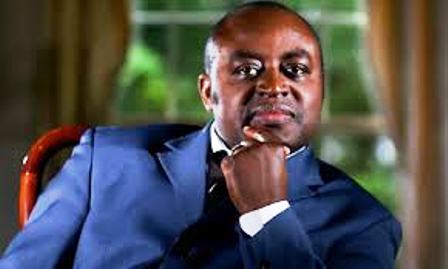
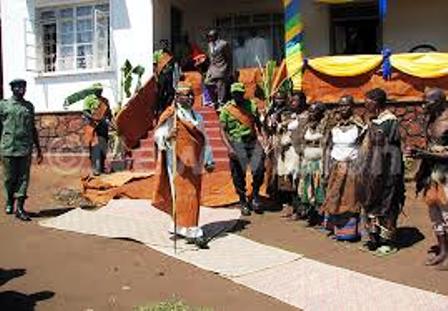
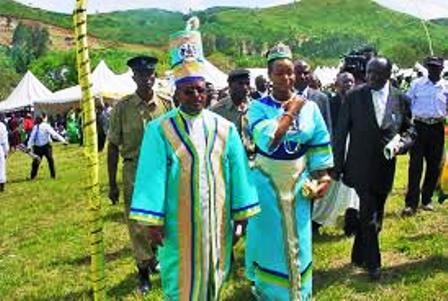







New! Comments
Have your say about what you just read! Leave me a comment in the box below.